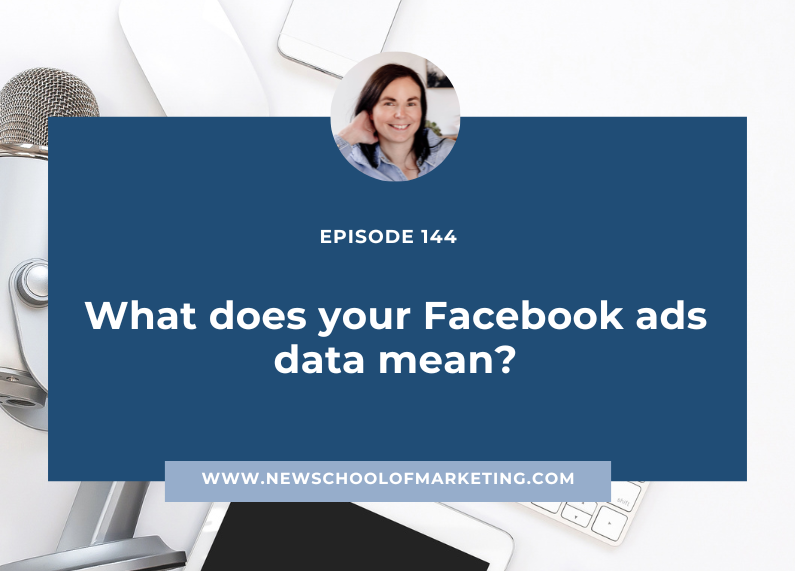
Let’s talk about analysing your Facebook ads results.
We’ll talk about what to look at, what it means and I know that Facebook Ads Manager gives you a lot of data which can be quite overwhelming if you’re not familiar with it or if you don’t know what you’re looking for.
When you open up the dashboard, you’ll be presented with the default columns that focus on performance and there are some other options you can go into performance and clicks but it probably still doesn’t mean much to you. So even though those reports are a really good start, it doesn’t quite give you all of the information that you want to be looking at.
Let’s dive deeper into the results so you can decipher what’s what and if it’s working.
Tune in
Connect with me
Website: www.newschoolofmarketing.com
Facebook: @newschoolofmarketing
Facebook group: @newschoolofmarketing
Instagram: @bianca_mckenzie
Love the New School of Marketing Podcast?
Let’s be honest and upfront, because you know that’s what I’m all about. Podcast reviews are super important to iTunes and the more reviews we receive the more likely iTunes will reward us with better reach.
I want to reach more course creators, store owners and awesome business builders that can add extreme value to our awesome insiders. I already love that you’re here and ready to rock your business, but I’d be extremely grateful if you would review me on iTunes and SUBSCRIBE!
Can’t wait to teach you everything I know about online marketing!
Transcript
Welcome to the New School of Marketing podcast, the place for smart, simple strategies that will amplify your business results, sharing practical tips, insider knowledge, and actionable advice. Because marketing is something that every business owner can do. Now let’s get started. Introducing your host, Bianca Mackenzie, mum, lover of snow, sports, camping, horse riding, and in demand launch strategist and Facebook advertising knowledge bank.
Hey. Welcome to the New School of Marketing. Podcast. Thank you for tuning in. Before we start the show, I would love to pay my respect and acknowledgement to the palawa people of Lutruwita who are the traditional owners of the land on which my business operates. I pay my respect to their elders past, present, and emerging.
Awesome. Thank you so much for being here we are at the end of the school holidays. Hooray. This time we actually didn’t do that much, to be honest. I took my daughter to see the Paw Patrol movie because she was hanging out for that, and we did a day trip, but other than that, it was pretty much business as usual. We’re kind of waiting for the big summer holidays to get away and good things that we didn’t actually plan to go away because, yeah, middle of a launch for my clients. So that always takes a lot of energy in a way, just mental energy. So, yeah, really excited about the launch and the results that we’re getting. But other than that, the holidays were just kind of like business as usual.
So today I want to talk about analyzing your Facebook ads results. So what to look at, what it means. And I know that Facebook Ads Manager gives you a lot of data, like the dashboard gives you a lot of information, and it can be quite overwhelming if you’re not familiar with it or if you don’t know what you’re looking for, especially because Facebook just gives you like a default kind of report. So when you open up the dashboard, you’ll be presented with the default columns that focus on performance. And there’s some other options you can go into performance and clicks and that kind of thing, but it probably still doesn’t mean much to you. So even though those reports are a really good start, it doesn’t quite give you all of the information that you want to be looking at.
But before we dive into the Ads Manager dashboard, let’s take a step back. The first step in analyzing your results is to look at your goal. So what exactly did you set out to achieve with your ads? And this will help you determine what you need to look at in terms of your reporting, at least your end result. Then the next thing that will help you look at all of the results is to map out the journey your prospect takes to get to where you want them to be and what you want them to do in terms of your ads. It’s kind of like reverse engineering by starting out with your ultimate goal, like what’s your ultimate goal of your ad? And then work backwards. So the thing that you want your prospect to do but then take a step back and take a step back. And ideally, you map all of this out before you run any ads. But I’ll go through it here to help you analyze and interpret your Facebook ads results.
If you have already run some ads, I’ll go through two different examples. The first one is a lead generation ad. So it’s to get people to opt in for a free offer, to get them on your email marketing list so that you can nurture them towards your paid offer. And often those free offers are like a PDF download. It could be a webinar, it could be a challenge.
There’s lots of different offers and they’re all different in a way in terms of engagement and in terms of input from your audience. I mean, like a webinar takes more of an input than it would to just download a guide. So the leads can be a little bit different in that aspect. So the stats that you want to look at and I’m going to go through them and I’m going to explain them, but I’ll list them out first. The stats that you want to look at are your conversions, aka your leads. If you’re doing lead gen ads. And I will call them conversions and leads, they are in this context, they are the same. It’s just that when you run the ads, you’re setting up a conversion ad and the conversion is a lead. So you want to look at the conversions, like, as in the number of conversions, the number of leads you want to look at, your cost per conversion, aka the cost per lead. You want to look at your link CTR. So your link click through rate.
You also want to look at the number of link clicks, which is related to the CTR, the link CTR you want to look at your conversion rate and I’m talking about your landing perch sorry, your landing page conversion rate. So if you send 100 people to your landing page, aka your ad sent 100 people to your landing page, and 40 of those opted in for your free offer, that is a 40% conversion rate. So this is not something that you’ll see in your ads dashboard. You can set up a custom thing for it, but you can also just calculate it. You can just look at the link clicks and then at your leads and then calculate what the conversion for that is. And the other thing is that you need to look at your CPM, your cost per impression.
So what does all of this mean? Let’s dive in. So some of it is quite self explanatory. So like the number of conversions, the number of leads, that’s pretty obvious. It’s the number of people that have opted in to get your free thing and are now on your list. If the number of people opting in is not looking the same at your email marketing platform end, you might have to look into whether or not there is a double opt in or that people have to take another step or something like that. Sometimes there is some misreporting like if your pixel isn’t installed properly or your downloadable free thing or webinar is on the next page and then from your emails you send them back so that next page there can be like double opt ins and things like that. But generally speaking, if you set the whole funnel up correctly, you should see a similar number of conversions in Facebook and in your email marketing software.
Then your cost per conversion or your cost per lead that basically tells you how much you are paying for someone to subscribe to your list. So it looks at the total amount spent and the number of conversions or the number of leads and then it calculates a cost per lead or a cost per conversion. This is important to know because you need to already be aware of how much you should or can be paying for a lead. And I know we always want the cheaper leads, but keep in mind that sometimes the cheaper leads are not the better leads.
So this is another thing to sort of keep in mind. If your offer and this really depends on the business, if your offer is something, if you have an e course and your offer is like $500, you obviously don’t want to be spending too much on a lead. But if your offer is like a kitchen rental so this is not for an e course, but this is like to get leads and your offer is a kitchen renovation that’s like $80,000, then you can be paying more for a lead.
Then the next one is your link CTR. So your link click through Rate. This basically indicates the percentage of people clicking through that CD ad. Your link click through rate. The benchmark for that is about 1%. So if less than 1% are clicking through, that tells us that either your ad creative or your audience is not quite right. The click through rate is too low, people are not resonating with it. So go back to the drawing board and in a way start again. It really just means that it’s just not an enticing enough ad for people to click on. If it’s under 1% click through Rate link clicks that is sort of self explanatory. It’s the amount of people or the amount of clicks that are on your ad. And it doesn’t necessarily have to be the amount of people. Some people can click more than once but yeah, it’s the amount of times your ad has been clicked on and then someone has taken them to the next step, talked about conversion rate a little bit.
So, again, that is for your page, for your landing page, not necessarily data that’s in Facebook, but you do want to look at that and it really depends per industry. I find it really hard to put a benchmark on it. I am a bit of a high achiever, so I like to see my conversion rates between sort of 40 or 50%. But some industries, that is just not something that’s common. So aim for 30, 40%. If you can get much higher conversion rates, then obviously that is amazing. That means your landing page is doing its job. It means that when people go there, they actually take the next step. They are loving it so much that they will take the next step. So this is the thing. Not everyone who clicks on your ad will become a subscriber. So if your conversion rate is like 40% to 50%, that is actually pretty good. Anything higher than that is really good. So look at your conversion rate. If your conversion rate is low, let’s say like 15%, 20%, then work on your landing page. Work on that page where people are putting in their details to get the freebie, because it’s just either not friendly for mobile devices, which is possible, or it’s just not enticing enough for people to actually put in their details to get the freebie. So if that’s where your bottleneck is, then focus on that again, then it’s not the ads. So if your click through rate is over 1%, that means the ads resonating. That means people are engaged and interested enough to go take the next step. But then if your landing page is not pulling its weight, you’ll be able to see that from your data. So if people are clicking and over 1% are clicking and then you’re getting like a really low conversion rate on your landing page, then your landing page is not working as well as it should. So then work on your landing page. And this is why I say that Facebook ads data tell a story. Look at every single point. I’m like, okay, what is this telling me? Like I said, if people are not taking the next step, work on your landing page.
The last one is CPM cost per impression. I don’t always look at this, but it is important to look at it because sometimes it gets a bit too expensive. If it’s kind of like talks a little bit or that doesn’t talk results. Oh, I know they talk, but yeah, it’s about competition. So if your cost per impressions are really high, it means your ads is not being shown enough because there’s like a lot of competition. So everything else will sort of be more expensive. So you really want to be focusing on creating an ad that people are clicking on, like that they really keen to click on. Creating a landing page that people convert really well on because then your cost per impression doesn’t matter as much. Okay, next one. So the second one that I want to talk about is a conversion ad. So, for example, if you’re selling an e course and you’re getting to that point of opencard, joined a program, that kind of thing, the end goal is to encourage people to purchase your e course. So we’ll be looking at other kind of data. And look, this is not the kind of ad that you would be running straight out the gate unless you like a really low cost offer, like under $40 that you know is going to sell you’ve done some testing on, you’ve sold it, the funnel is proven, all of that kind of thing. But in general, what you would do first is run a lead generation ad, have either some launch events or like a number of events, like a webinar and that kind of thing, nurture sequence where you email people a lot and they get to know you, they get to like you, trust you, all of that.
And then you’ve got your conversion ads, like your sales ads. And they tend to be, we would call that bottom of funnel. They are generally only run to people who are in your warm audience that you have nurtured before. Unless, like I said, the price point is really low, then you can sometimes run those top of funnel so to cold audiences. But for this exercise, let’s assume this is your warm audience, your bottom of funnel. These are people that you are retargeting, that have engaged with you before, that are in your network already. So the stats you want to look at are purchases. Pretty obvious, like you need to look at how many sales you’ve made. I normally also look at initiated checkouts. So if there’s like a really big discrepancy between initiator checkouts and purchases, I investigate that and there’s always a discrepancy. Some people will initiate a checkout and then chicken out kind of thing. And this is why retargeting ads are so powerful.
So purchases initiate checkout. Again, link CTR so you want to know if the ads resonating. People are clicking like you want to be at that 1%. I have found, though, with the retargeting ads, sometimes they are like a lot over 1% because it’s a warm audience and sometimes a lot under. And this one can be a little bit hard to get right, but keep an eye on it. Again, link clicks. And then again, you want to calculate the conversion rate of your sales page. So how many people are you sending to how many people are the ads sending to your sales page? And of course, it comes down to having your ads, having your email funnels. It shouldn’t just be traffic from your ads, but look at the traffic from the ads going to the conversion to the sales page and then calculating your conversion rate based on that. And then measure it against benchmarks. So with online course creation or online course conversions, it tends to be between 1% to 3%. 3% is the higher kind of conversion rate. So put it against benchmarks. So you need to be measuring a lot of things. Yeah, there’s so many things to look at, but you need to look at the data and sort of like, put your detective hat on and kind of go, okay, what is this telling me? Because it tells a story, and I often say it is so easy to get to run lead generation ads. Like, to set up the ads to drive the traffic to the pages, it’s so easy. But then you need to find out each step of the way what it all means. Lead generation ads are easy. Doesn’t mean that they actually generate leads, because it isn’t all up to the ad. Same with sales. Your sales are based on your entire funnel. The sales page and the landing pages need to do pretty much most of the heavy lifting. Your launch events if you’re having launch events like webinars and things like that, or challenges, they need to do a lot of heavy lifting. Your nurture and your sales emails need to do a whole lot of heavy lifting. The ads are only a tiny part of the whole story. Like, they literally are a tiny part of the whole story. And it is reasonably easy to get leads or to send or to set up ads to grow your list and to get leads. But then the conversion part, that’s the hard part. And that’s the part that Ads managers don’t really play a role in. Like, our role is to get you leads. Your role and your funnels role is to convert those leads.
Getting the leads is not the hard part. Converting the leads, it doesn’t have to be hard, but it is something that an Ads manager is not responsible for. It’s not what your ads are responsible for in its entirety. We just run traffic to the pages, and your pages and your launch events need to do the converting. So you need to look at the entire story. And I do work with clients about the whole funnel. So one of my clients, like, literally wrapping up a launch, they have a really high conversion rate because they run multiple live webinars, where when people show up, they convert like 16% to 19%. So we put everything we can in, number one, lead generation, but also number two, getting people to show up. As soon as they show up, as long as they show up, we know that they can be converted because there’s so much incredible value in all the things that my client put on. So we put ads in for lead generation, but we also on top of emailing them like 50 million times to say, hey, remember, this class is coming up. We also run ads to say, hey, remember this is coming up. This is what you’re going to learn. Be there, live. You can win this. We just try everything we can to get people to show up. Anyway, I’m going off topic here. So there’s a lot of things that you will find in Facebook Ads Manager. A lot of it might not mean anything, might not be relevant. The most important things I look at are things like link CTR. So your link click through rate, which means are your ads actually resonating? Are people excited enough by them to click on them? And then things like conversions, whether that is a purchase conversion or a lead conversion, the cost of it. So you need to already do your calculations to see how much you can afford to pay for a lead. And you also need to know your conversion rates. So if you know your conversion rates in terms of sales, if you know that if you get like 1000 leads and you convert X number, then you can calculate how much you can be spending on a lead. So you do need to know your conversion rates, even though that’s not something your Ads will tell you, but you can calculate that based on the number of clicks. So the number of people that go to your page and then the number of people that actually sign up to be conversions. Look at the number of purchases initiated checkouts. So if your initiated checkouts are super high and your purchases are not, there’s nothing coming through.
Go through your own funnel. Go and see if there is tech issues. If it is easy to check out on a mobile, you have to cover all your bases. So that’s a whole lot about interpreting your Facebook Ads data, learning to read the story. Like you need to read between the lines, look into the things and go, what does this mean? What does this mean? What does this mean? All this data is so incredibly valuable because it tells you what is and isn’t working. If it is working, awesome. You can amplify it. It’s almost predictable in terms of what your next result will be. If it is not working, you need to go back to the drawing board and you’re like, if it is your landing page that’s not converting easy. Create another landing page. Test again. And this is how, in the end, you can optimize and you can actually get results from this. All right, I’m going to get off my high horse now. If you have questions about this, please feel free to reach out. You can email me hello@biancamckenzie.com, or slide into my DMs on Instagram bianca_mckenzie.
So you can probably hear. I’m so passionate about this because Facebook Ads work, but you need to know how to read your data to then make improvements. Awesome.
Thank you so much for joining me on this episode. I really hope it was helpful. I hope you get some better insights into your Facebook ads data. Go back in there, have a look and see what the story is, and you might actually get a bit of an AHA moment and go, oh, that was it. And you can make improvements.
I can’t wait to share more marketing tips with you next week. If you are ready to take your business to the next level with Facebook and Instagram ads, make sure that you visit newschoolofmarketing.com to download practical and free resources. Plus, don’t forget to subscribe to the podcast so that you don’t miss any episodes. I can’t wait to go on this journey with you. Until next time, take care and market your business every day.


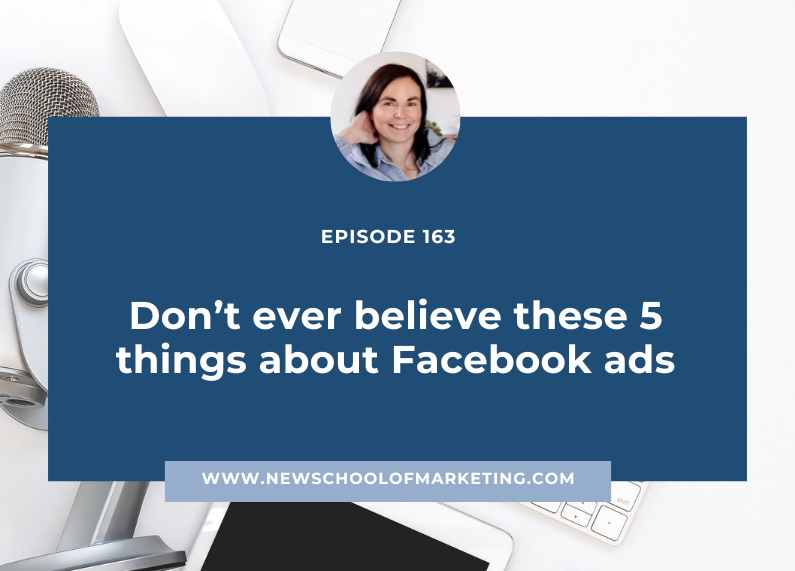
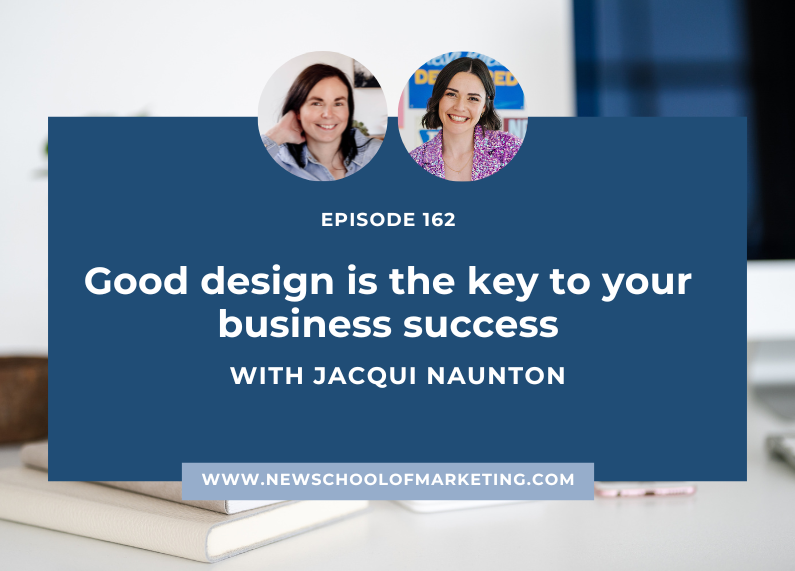
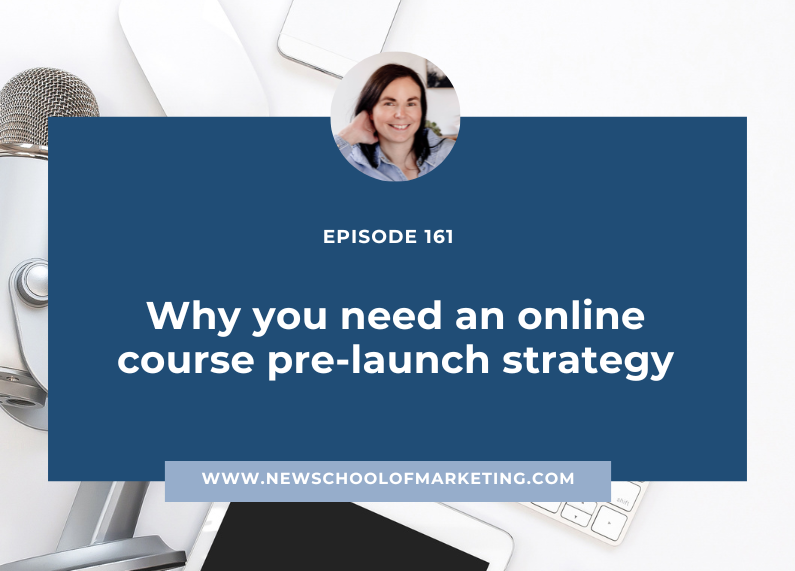
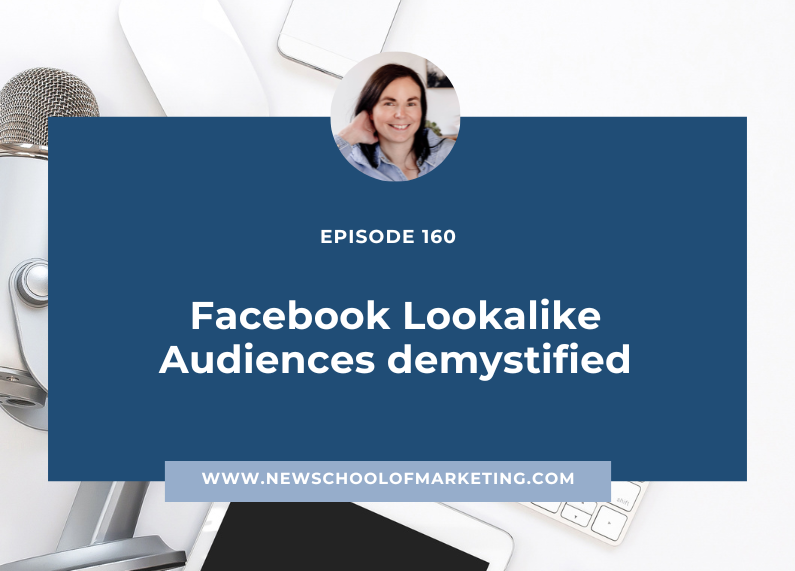
0 Comments